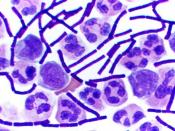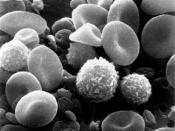Diseases and the Immune System.
What is a disease?
A disease is an illness or sickness caused by a virus, bacteria or parasite that presents with certain symptoms and physical signs. There are many diseases that are present in our modern day world and each of these presents with specific symptoms and physical signs, which allow doctors to make a diagnosis and treat the illness.
Diseases include such things as measles, mumps, chicken pox, cholera, dysentery, hepatitis A and poliomyelitis. Many of these diseases can be dealt with by our bodies own defence system, but sometimes the body needs help as it is unable to combat the disease and this is when doctors prescribe antibiotics and other medications
How bacteria and viruses enter the human body.
There are a number of ways in which diseases enter the human body. Bacteria and viruses can be airborne(droplet) and enter the body through our respiratory system eg the flu or the common cold is often spread when by someone sneezing.
Some of the virus is released into the air in droplet form and is then taken in by the respiratory system of other people in close contact.
Some diseases enter the body through food and water such as cholera and hepatitis A. The food or water contains bacteria, which often comes from unclean handling and when eaten or drunk allows the bacteria to enter the body through the digestive system. Many gastrointestinal infections happen as a result of this.
Other diseases can be spread through insects such as the mosquito. The person is bitten by the insect and bacteria enter the bloodstream. An example to this is malaria which is still common in many countries today. Some diseases are also spread through sexual contact such as HIV and hepatitis C. The final...


